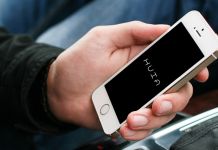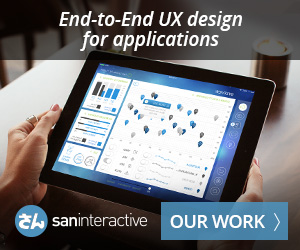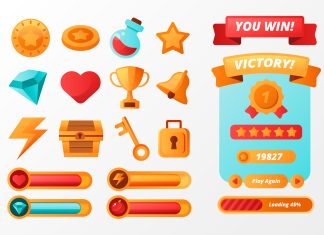Artificial Intelligence, or AI, has evolved over the past few years from a promising concept to a reality, shaping our interactions and experiences in ways we couldn’t have imagined before. From AI-powered virtual assistants, to those personalized Netflix suggestions, and over to self-driving cars, medical diagnosis, or smart chatbots that pop up on websites, AI is seamlessly integrated into our daily routines. And this is just the beginning.
Top UX design agencies often turn to AI technologies to create meaningful and intuitive user experiences. However, as AI’s influence grows, considerations of ethics and privacy become crucial to strike a balance between innovation and responsibility.
In this article, we will explore how AI is integrated into UX design, examine the benefits it brings to the practice and address the main concerns associated with using AI in UX design.
What is AI?
AI encompasses a range of technologies, including machine learning (ML), natural language processing (NLP), computer vision, and more. These technologies enable machines to analyze vast amounts of data, detect patterns, make predictions, and even simulate human-like interactions.
How does AI impact UX design?
In the context of UX design, AI can significantly enhance the way users engage with websites and landing pages, leading to improved user satisfaction and business outcomes.
Personalized user experiences
AI-powered systems can gather and analyze user data to personalize user experience, by customising the content, layout, and interactions based on individual preferences. For instance, Netflix employs AI algorithms to recommend personalized movie and TV show suggestions, improving user experience and increasing engagement.
Intelligent chatbots
AI-based chatbots offer instant and accurate responses to user queries, providing round-the-clock support. By understanding natural language and context, chatbots can simulate human-like conversations, addressing user needs promptly. An example is the customer service chatbot of Sephora, a cosmetic brand, which assists users in finding the right products and answers their questions efficiently.
Advanced analytics
AI technologies enable UX designers to analyze user behavior and gather insights from complex data sets. With the help of AI-driven analytics tools, designers can identify patterns, make data-driven decisions and optimize user experiences. Google Analytics employs AI algorithms to provide detailed reports and actionable insights to improve website performance.
Automated design processes
AI can automate repetitive and time-consuming design tasks, allowing designers to focus on more creative aspects. For instance, AI-powered design tools like Sketch2React and The Grid leverage machine learning algorithms to generate code, layouts and prototypes, reducing the time and effort required for manual design tasks.
Accessibility enhancement
AI can help improve accessibility by identifying potential barriers and providing alternative solutions. For example, Google’s AI-powered Accessibility Scanner analyzes web pages for accessibility issues and suggests modifications to ensure compliance with accessibility standards.
The challenges of using AI in UX design
While AI offers numerous benefits to UX design, it also presents certain challenges that designers need to address.
Ethical considerations
AI systems must be designed and trained to align with ethical principles. Bias, privacy concerns, and the impact on vulnerable populations are critical aspects that designers need to address when incorporating AI into UX design. For example, facial recognition algorithms have been found to exhibit biases against certain ethnic groups, highlighting the importance of ethical considerations in AI design. UX designers must prioritize robust security measures, including encryption, data anonymization, and adherence to privacy regulations like GDPR, to mitigate these risks and ensure user trust.
Data quality and interpretation
AI algorithms rely on high-quality, relevant, and representative data to make accurate predictions. Inadequate or biased data can lead to flawed insights and biased recommendations. UX designers have to be aware of the potential biases associated with AI algorithms and should implement rigorous testing and validation processes to identify and mitigate bias in AI models.
User trust and transparency
AI-powered systems can sometimes appear difficult to comprehend. Users may feel uncomfortable interacting with systems that they cannot fully understand. UX designers need to prioritize transparency, providing clear explanations of how AI is used and allowing users to control and customize their experiences to build trust.
Over reliance on AI
While AI can augment UX design processes, it is essential to strike a balance between automation and human creativity. Overreliance on AI may lead to standardized and generic experiences, lacking the personalized touch that human designers can offer. UX designers should leverage AI as a tool to enhance their skills rather than replacing human creativity.
Popular AI tools used by UX designers
UX designers have a variety of AI-powered tools at their disposal to streamline their design processes, enhance user experiences, and create more engaging digital products. Here are some popular AI tools that UX designers can use:
- Adobe Sensei: Adobe’s AI platform, Sensei, offers various AI-powered features across Adobe Creative Cloud applications. It automates tasks like image retouching, content generation, and design optimization, freeing up designers to focus on more creative aspects.
- Sketch2React: This tool uses AI to convert design sketches into interactive prototypes and code. It helps designers bridge the gap between design and development, saving time and effort in the prototyping phase.
- Figma’s Auto Layout: Figma, a collaborative design tool, incorporates AI to automate layout adjustments based on design changes. Auto Layout maintains consistency across designs by dynamically adjusting elements.
- UXPin: This design and prototyping platform uses AI to provide design suggestions and improvements based on user input. It assists designers in creating more effective and user-friendly designs.
- Adobe XD’s Content-Aware Layout: Adobe XD’s AI-powered feature suggests layout adjustments based on the content added to a design, ensuring that elements are placed in a visually appealing manner.
- The Grid: This AI-powered web design platform generates website layouts based on user input and content. It uses AI algorithms to create visually appealing designs that adapt to different screen sizes.
- Crazy Egg: This tool employs AI to analyze user behavior on websites through heatmaps and user recordings. It helps UX designers understand how users interact with a site and identify areas for improvement.
- Optimizely: Optimizely uses AI to automate A/B testing and optimization processes. It helps designers test different design variations and identify which ones lead to better user engagement and conversions.
- Google Analytics: Google Analytics incorporates AI features that provide insights into user behavior, traffic patterns, and conversion rates. These insights help designers make data-driven decisions to enhance user experiences.
- Personas by Xtensio: This tool uses AI to automate the creation of user personas based on demographic data and user research. It assists designers in understanding their target audience and designing with their needs in mind.
- Unbounce’s Smart Traffic: Unbounce employs AI to automatically route users to the most relevant landing page variant, optimizing conversion rates. This feature ensures that users see the content that is most likely to resonate with them.
- Lumen5: Lumen5 uses AI to transform written content into engaging video presentations. UX designers can use this tool to create visual content that captures users’ attention effectively.
- InVision V7: InVision integrates AI to help designers quickly transform static designs into interactive prototypes. It also offers design suggestions and insights to enhance the user experience.
- Cortex by SoloSegment: Cortex uses AI to analyze user behavior and optimize website search functionality. It ensures that users find relevant content quickly, enhancing their experience on the site.
- Adobe Illustrator’s Auto Trace: Adobe Illustrator uses AI algorithms to automatically convert raster images into vector graphics, making it easier for designers to create scalable and high-quality designs.
These AI tools cover a wide range of design needs, from automating repetitive tasks to enhancing user research and analysis. Integrating these tools into the UX design process can significantly improve efficiency and help designers create more user-centered and impactful digital experiences.
Summary
AI offers immense potential in transforming UX design practices by personalizing experiences, automating tasks and providing valuable insights. However, leveraging AI in UX design comes with its set of challenges and risks. By addressing these concerns and ensuring a balanced approach between automation and human creativity, designers can harness the power of AI to create exceptional user experiences that are ethical, inclusive and engaging.











































